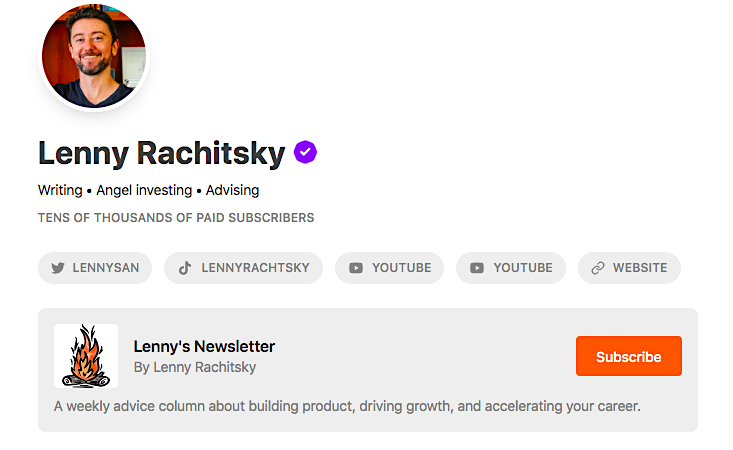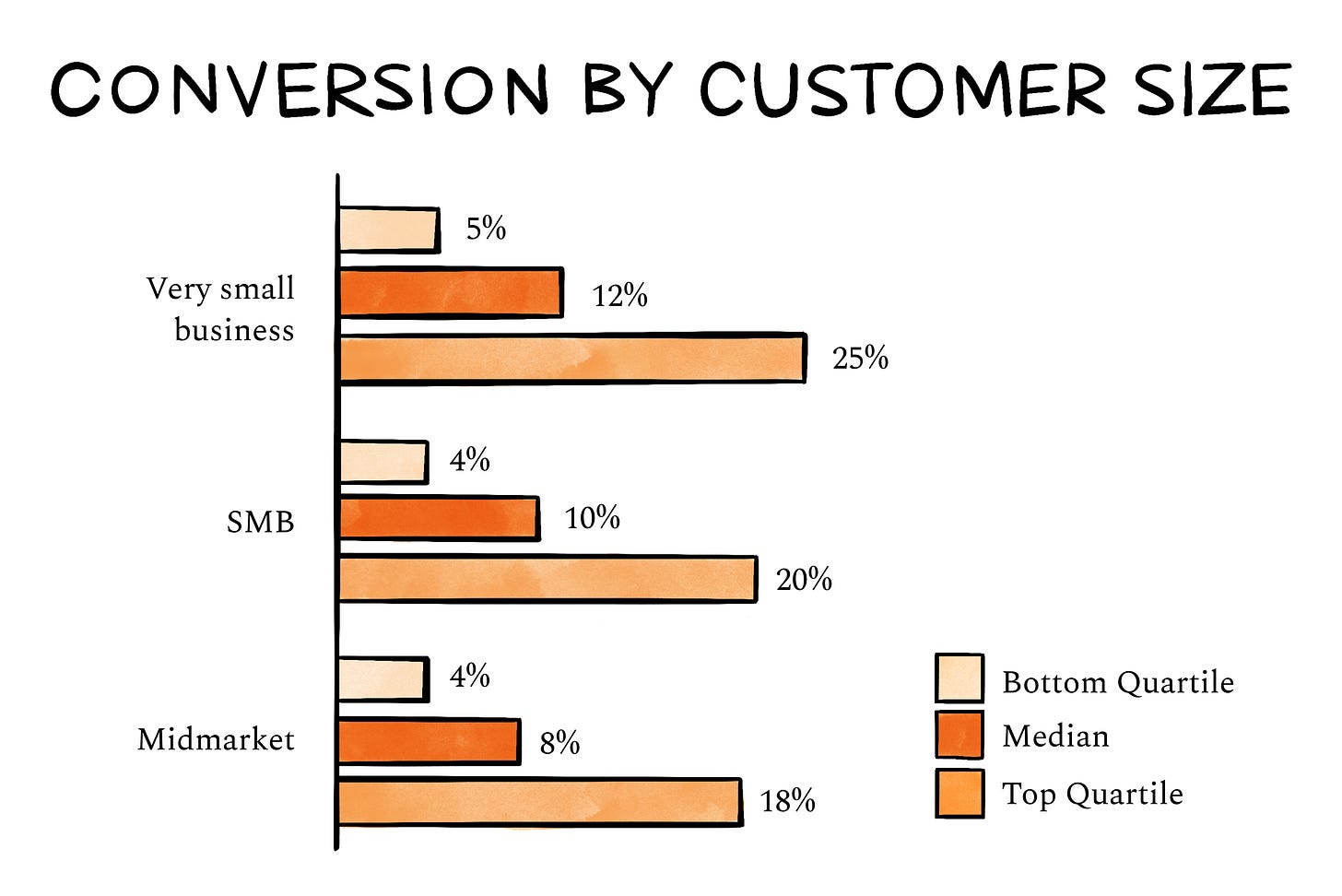Updated August 2024
What is a freemium conversion rate? In today’s digital-first business world, metrics are the backbone of success, guiding companies toward profitable strategies and highlighting areas of improvement.
Among these metrics, the “free to paid conversion rates” stand out as a particularly telling indicator for businesses, especially those operating in the SaaS (Software as a Service) space.
But how do you define a “good” freemium conversion rate, and how can businesses navigate their strategies to increase it? Let’s take a look!
What Is a Free to Paid Conversion Rate?
Before diving deep, it’s crucial to have a foundational grasp of this metric.
A free to paid conversion rate calculates the percentage of users who start with a free version or trial of a product or service and eventually upgrade to a paid version.
What is a Freemium Model?
The freemium business model is a popular strategy among SaaS companies, where basic features of a product are offered for free, while advanced features are reserved for paying customers. This model aims to convert free users into premium users by providing a free version of the product that encourages users to explore its value.
A key metric in evaluating the success of a freemium model is the freemium conversion rate, which measures the percentage of free users who upgrade to a paid plan. Typically, freemium conversion rates can vary widely, with benchmarks often falling between 1% and 10%.
To optimize the freemium model’s success, companies analyze user behavior and product usage data to understand what drives conversions. Offering an appealing free plan can attract potential customers, while strategically designed premium features can entice free users to upgrade. Effective user onboarding and customer feedback collection are crucial for engaging users and improving the free to paid conversion rates.
Overall, a well-executed freemium model not only boosts customer acquisition but also generates revenue by converting free users into paying customers.
Why SaaS Companies Use Freemium Models
The “freemium business model” is by no means new, although it has become quite popular in recent years as more and more businesses offer free trials or freemium models.
In the tech industry, particularly for software companies, SaaS companies, and subscription-based services, this metric is invaluable. It provides insights into user behavior, product value perception, and potential revenue streams.
There are a number of reasons why businesses offer free trials or freemium models, such as:
- To attract new users and let them try the product before they buy it
- To educate users about the product and its features
- To generate leads and transition free users into paying customers
- To increase customer engagement and retention
- To drive up sales of premium products or services
Navigating Key Freemium Conversion Rate Models
The freemium model can be a very effective way to grow a business. The tech industry, specifically the SaaS sector, offers a diverse range of free-to-paid conversion models.
However, it is important to choose the right freemium model for your business and make sure that you are offering enough value to attract and retain users.
Lenny Rachitsky is a former product manager at Airbnb with a great newsletter that is #1 on Substack. A lot of people in tech subscribe to it because he’s got a lot of data to share:

According to the valuable insights from Lenny Rachitsky, there are distinct parameters which can define success in each of these conversion models:
- Freemium Self-Serve: This user-centric model is the embodiment of the DIY approach, allowing freemium users to navigate, explore and understand the software independently. Popular platforms like HubSpot are prime examples. An optimal conversion rate here is between 3-5%, but exceptional rates can reach 6-8%.
- Freemium Sales Assisted: Here, the platform takes a hands-on approach. Engagement is deeper, often involving salespeople who can explain or even unlock specific features. This model is prominent in tools like Airtable and GitLab. The ideal rate ranges from 5-7%, with top-tier performers achieving 10-15%.
- Reverse Trial: A unique twist to the traditional trial, this model drops users right into a full feature free trial experience. They get a taste of all features but with a time limit. After which, they revert to a basic version or choose to upgrade. Success ranges from 7-11%, while those excelling hit the 14-21% mark.
-
Free Version Trial: The traditional, straightforward model where users can experience the product for a limited time. Companies like Shopify and Google Workspace have perfected this approach. Rates of 8-12% are commendable, while 15-25% showcases mastery.

Benchmarks for Successful SaaS Conversion Rates
What is considered a “good” free to paid conversion rate? Well, the benchmarks for successful SaaS conversion rates vary depending on the industry, the product, and the target market.
It’s crucial to benchmark against similar businesses and continuously experiment and refine your approach to optimize the conversion rate. Always remember to focus on delivering genuine value to users, as that’s the foundation of any successful free-to-paid strategy.
However, some general benchmarks for B2B SaaS include:
- Website visitor to lead conversion rate: 7%
- Free trial to paid conversion rate: 25-50%
- Website visitor to free trial conversion rate: 7.1-8.5%
- Freemium conversion rate: 1-10%
- Lead to customer conversion rate: 2.35-5.31%
- Activation rate: 36%
- Customer churn rate: 4.79%
Rachitsky also has a chart depicting conversion by customer size, which is really interesting. It shows that “very small businesses” convert more than SMBs and mid-market brands in the bottom quartile, median, and top quartile:

Take a look at his (or other) data to get a sense of whether you are above, equal or below industry benchmarks.
Boosting Conversion Rates: Proactive Strategies for Success
Recognizing benchmarks is the starting point. But the real challenge lies in elevating those numbers. To achieve this, businesses must adopt a proactive and multifaceted strategy that includes:
- Diversifying Payment Options: This seemingly simple tweak can have profound results. For instance, adding PayPal as an accepted payment method has consistently shown to improve conversion rates by up to 28%.
- Strategizing Pricing: A one-size-fits-all approach seldom works with pricing. By gauging market standards and understanding the perceived value of your product, you can optimize your pricing model. While low prices can boost conversions, they can be detrimental to long-term revenue if not calculated correctly.
- Understanding Customer Needs: Beyond pricing and payment, understanding and addressing specific customer needs can significantly impact conversions. Whether it’s through user feedback, direct communication or market research, getting a clearer picture of what your users want can lead to a tailored, more conversion-friendly product.
Some additional tips for improving your SaaS conversion rates are:
- Make sure your free trial is long enough. Users need enough time to get a good understanding of your product and see how it can benefit them. A good rule of thumb is to offer a free trial of at least 14 days.
- Highlight the key features and benefits of your product. Make sure your website and marketing materials clearly explain what your product does and how it can help users.
- Provide a seamless onboarding experience. Make it easy for users to get started with your product. This includes providing clear instructions and support.
- Offer incentives for users to upgrade to a paid account. This could include a discount, a freemium upgrade, or access to exclusive features.
- Track your conversion rates and make improvements over time. The best way to improve your conversion rates is to track them and make changes as needed. There are a number of tools available to help you track your conversion rates.
There are no guarantees, of course, but following these tips will certainly help you improve your SaaS conversion rates and grow your business.
The Broader Picture: Adapting Beyond SaaS
While the SaaS industry offers a structured framework, the free to paid model’s versatility extends far beyond. From e-books to paid subscriptions for physical goods, the principles remain similar.
But always remember that each business must be able to adapt these strategies to their unique context.
Let’s take an info-product (a type of product that is primarily educational in nature, like e-books, courses, templates) as an example. An online course might have a higher conversion rate if it provides several free introductory modules for potential students to explore.
By experiencing these modules, learners can get a taste of the teaching style, content quality and course structure. If they find value in the free content, they’re more likely to invest in the full course, leading to a higher conversion rate.
Similarly, physical subscription boxes, which are curated packages of products sent to subscribers on a regular basis, might find success by offering a discounted or free initial box. This promotional strategy allows prospects to physically touch, use and evaluate the items in the box.
By experiencing the quality and variety firsthand, potential subscribers can better understand the value proposition of the subscription and, if they’re pleased with the initial offering, they’re more likely to commit to a recurring subscription.
Summary: Benchmark and Set Goals
While figures like those provided by Lenny Rachitsky offer a solid grounding, it’s essential to remember that industries, target audiences and even economic climates can cause fluctuations in these numbers.
Regularly benchmarking against industry standards, while also setting personalized goals, can ensure that a business stays on the path of growth and sustainability.
To excel in the free to paid conversion game, businesses must intertwine strategies with insights, be responsive to changes and continuously evolve with the market pulse. And as the digital landscape continues to evolve, so will the art of mastering conversions.
The key lies in staying informed, adaptable, and always keeping the user’s needs at the forefront.
If you’re ready to boost your online revenue, Single Grain’s CRO (and SaaS) experts can help!👇
Recommended Video
Repurposed from our Marketing School podcast.
Additional contributions by Sam Pak.





